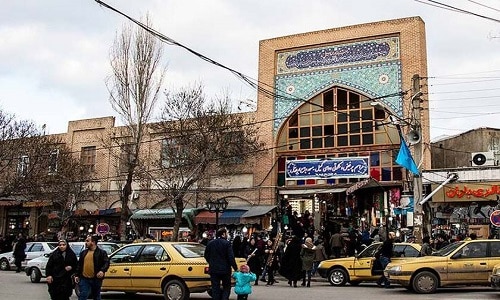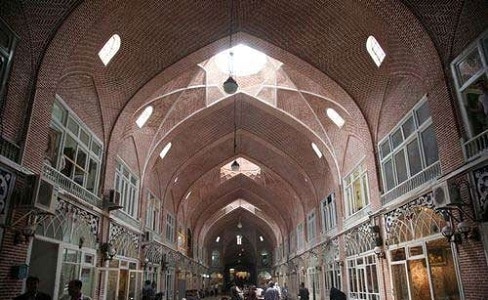Ardabil Grand Bazaar, also known as the “Old Bazaar”, is one of the busiest tourist places in the city, which is located in the city center on both sides of Imam Khomeini Street. This bazaar, like other traditional bazaars in Iran, consists of rows, houses, Timchehs and, of course, baths and mosques, in each of which an eye-catching design and architecture has been used.
History
On the northeast of this bazaar is an inscription with the date of construction and the name of the founder of the bazaar. However, due to the erosion of the stone surface and also the lack of accurate mention of historical sources, the exact time of construction of this market is not known and according to a tradition, it was built before the Safavid rule. Of course, its main prosperity is related to the Safavid period. This prosperity was mostly due to the fact that the city of Ardabil was the birthplace of the Safavid sultans and the tombs of its dead and kings. On the other hand, despite the tombs of great figures such as Sheikh Safi al-Din Ardabili, the great ancestor of the Safavid dynasty, Ardabil was also a religious center and the spiritual capital of the Safavid sultans. But the greatest prosperity of this market was related to the tenth century Hijri during the reign of Shah Tahmasb I.
Architecture of Ardabil traditional bazaar
The architecture of Ardabil Grand Bazaar is a mixture of traditional and original Iranian and Islamic architecture and narrates the ancient history of Ardabil. The oldest tourists who have mentioned Ardabil Bazaar have described this historical complex as a cross in four rows, in the middle of which there is a mosque. The main part of the Bazaar is a rectangular space with a roof consisting of 9 domes in the middle with four circular columns of thorn stone. The columns have a cubic head and the lower arches of the domes are connected and restrained by wooden beams. Today, this bazaar introduces works from the Safavid and Qajar periods, and from the main row of the bazaar, the row of Pir Abdolmalek, the row of shoemakers, the row of Qaisaria, Zargaran bazaar, Sarai Golshan, the row of slaves, knife makers, Sarajan, cotton sellers, coppersmiths, blacksmiths, Khoshkbar House (Haji Mirza), Vakil House, New House or Zanjirloo House, Haj Ahmad House, Haj Shakar House, Majidiyeh House, Imam Juma House, Dogchi House and Timcheh Zanjirli House
In all parts of this market, you can see truncated arches and simple domes, so that the arches of the shops are about three meters wide and the bases of the arches are about 80 centimetres in diameter. There are openings in the dome arches that provide light and illumination to the market. In 1985, many restorations were made on this market and it was included in the list of national monuments of Iran. Ardabil Bazaar, with its historical antiquity, is one of the most important markets for the supply of necessities for people of Ardabil. So that new passages and markets and shops have not been able to reduce its dynamism and excitement.
According that bazar of Ardabil has different rows for the exclusive sale of one type of product, this Bazaar can provide all kinds of food products, clothing, home appliances and even industrial tools.
The sale of souvenirs, handicrafts and agricultural products of the province is also common in this Bazaar. Most of this Bazaar has been destroyed due to urban changes in the last 50 years and sometimes there is no connection between parts of the Bazaar and its center. This separation is to the extent that the market is located on both sides of Imam Khomeini Street and the part of Gold sellers of Bazaar are completely separated from the Caesarea market.
Cost and time table to visit Ardabil Grand Bazaar
Ticket price: free
Opening hours: 8:00 – 21:00
English and Farsi address of Ardabil Grand Bazaar
Ardabil Grand Bazar, Imam Khomeini street, Ardabil
اردبیل، خیابان امام خمینی، بازار سنتی اردبیل












